Alabama's Worst Invasives
Learn about Alabama's most prevalent invasive plant species and how you can help control their spread.
How can you help?
Six simple things you can do to help stop the spread of invasives.
- Gardening: Go native! Verify that the plants you are buying for your yard or garden are not invasive. Replace invasive plants in your garden with non-invasive alternatives.
- Boating: When boating, clean your boat thoroughly before transporting it to a different body of water.
- Hiking: Clean your boots before you hike in a new area to get rid of hitchhiking weed seeds and pathogens.
- Travelling: Don't “pack a pest." Fruits and vegetables, plants, insects and animals can carry pests or become invasives themselves.
- Caring for pets: Don't release aquarium fish and plants, live bait or other exotic animals in to the wild.
- Volunteering: Become a weed warrior! Volunteer at your local park, refuge or other wildlife area to help remove invasive species. Help educate others about the threat.
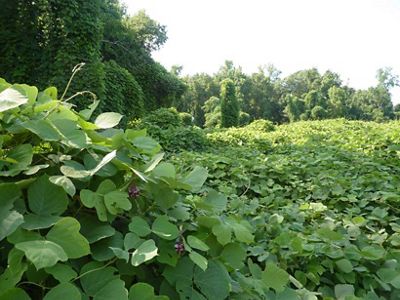
Kudzu (Pueraria montana var. lobata)
Invasive plants are a growing problem in Alabama, but not all non-native plants are invasive. Exotic plants become a problem when they escape cultivation, spread and aggressively replace native species. Some, like kudzu, are overwhelming entire landscapes.
Kudzu is native to China and was planted extensively in South in the 1930s, 40s and 50s for forage and erosion control. “The Vine that ate the South” continues to spread along edges of forests, pastures and right-of-ways and around cities and towns. During Spring, kudzu vines can grow up to a foot a day, covering trees, buildings, fences, road signs and telephone and utility poles.
In the late 1980s, a county agent survey estimated about 250,000 acres were infested by kudzu in Alabama. Control treatments have been successful using herbicides, overgrazing and mechanical root removal.
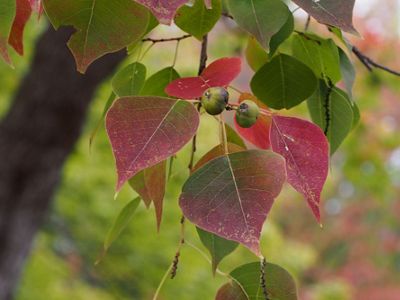
Tallowtree (Triadica sebifera or Sapium sebiferum)
Tallowtree is native to Eastern Asia and was first introduced in the 1700s and then spread by federally sponsored plantings in the gulf coast during the early 1900s for a failed seed oil industry. Its colorful fall foliage and rapid growth has made it a popular landscape tree. Prolific seed production and dispersal by birds and water has resulted in increasingly infested stream banks, riverbanks and wet areas as well as upland forests, especially in southern Alabama.
Several southern states have banned or in the process of banning sales of this species. Plants are controlled by application of herbicides to foliage, stems or cut stumps. The Nature Conservancy supports the efforts of the Alabama Invasive Plant Council to raise awareness and help stop the spread of invasive plants.
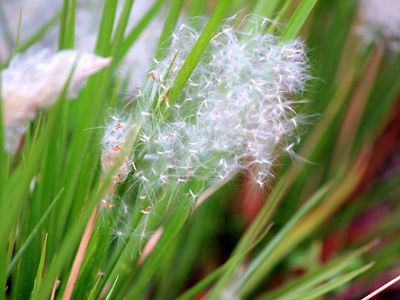
Cogongrass (Imperata cylindrica)
Cogongrass is native to Asia and was introduced into the Mobile area in the early 1900s. This tall perennial grass forms dense circular infestations that exclude all native species. It is highly flammable and poses a severe fire hazard.
Over half of Alabama’s counties have cogongrass infestations with the most severe being in the southern counties. Cogongrass is steadily spreading northward by windblown seeds, movement of contaminated fill dirt, and probably through horticultural plantings (there is a commercial red variety) as well as sale of hay, pine straw and straw from infested areas. This is a federal and Alabama State listed noxious weed. Successful eradication is achieved with multiple herbicide treatments over several years.

Chinese Privet (Ligustrum sinense)
Chinese privet is native to China and was first introduced into the United States as an ornamental shrub in the 1850s. This mostly evergreen shrub continues to be sold and planted. It spreads across the landscape via abundant seeds carried by birds and water, while infestations grow by prolific root suckering.
Chinese privet is just one of several species of privet invading Alabama’s fencerows, forested creek bottoms and upland forests. Dense patches, reaching 30ft tall, displace most native species and prevent regeneration of native forests. Plants are controlled by application of herbicides to foliage, stems and cut stumps.

Tropical Soad Apple (Solanum viarum)
Native to Brazil and Argentina, the tropical soda apple was first found in Florida in 1988 and in Alabama in 1994. This thorny perennial shrub invaded an estimated 1 million acres in five southern states within 7 years after its arrival. Over 15,000 acres are currently infested in Alabama with extremely rapid spread underway.
The plant is dispersed through interstate movement of cattle, hay and composted manure from infested areas, and local spread by wildlife is now suspected. Tropical soda apple is a federal and Alabama State listed noxious weed. Eradication requires multi-year application of herbicides.
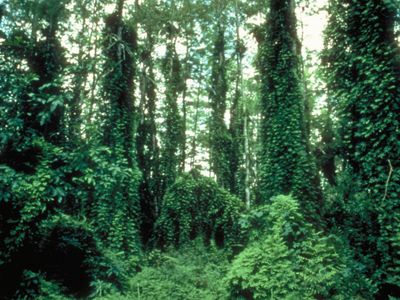
Japanese Climbing Fern (Lygodium japonicum)
Native to Asia and Australia and introduced into the United States in 1930s, this perennial viney fern is rapidly spreading by windblown and water-borne spores and shipments of contaminated pine straw throughout Alabama.
Although it dies back each winter, the prior year’s vines provide a trellis for expansive new growth that eventually covers shrubs and trees. This species displaces native plants, destroys wildlife habitat and blocks access to lands. Careful prescribed burns can reduce vines and applications of herbicides to foliage can control underground stems.
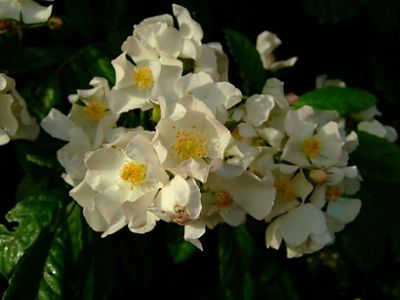
Invasive Roses (multiflora rose/Rosa multiflora, Cherokee rose/R. laevigata, Macartney rose/R. bracteata)
Native to Asia and introduced into the United States as ornamentals, livestock containment and wildlife habitat plantings, these roses are increasingly invading pastures, forest edges, right-of-ways and wetland habitats.
Cherokee and Macartney roses are evergreen and multiflora rose is deciduous, but all three form impenetrable entanglements that hinder land use and management. Cherokee rose is a major plant pest in Alabama's Blackbelt, while multiflora and Macartney roses occur throughout the state. Effective eradication can be achieved with repeated herbicide applications, while bio-control agents can weaken plants.
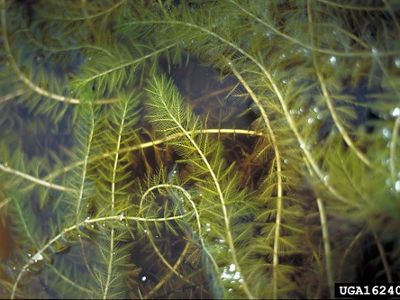
Eurasian Water Milfoil (Myriophyllum spicatum)
Eurasian water milfoil is native to Europe and Asia and introduced in the United States in the 1940s as an aquarium plant. This submersed, mat-forming perennial remains green during winter and occurs throughout Alabama in both fresh and brackish waters. It is an aggressive invader of reservoirs, rivers and lakes. It forms dense mats that replaces native plants and prevents light penetration, destroying fish habitat. It spreads when plant fragments hitchhike on boats and trailers, but it also produces seeds. Carefully planned herbicide applications can reduce infestations in some cases
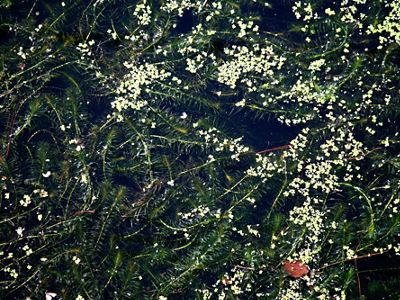
Hydrilla (Hydrilla verticillata)
Native to Asia or Africa and first introduced into Florida in the 1950s or early 1960s, this aquatic plant infests fresh-water ponds, rivers and lakes. Like many invasive aquatic plants, hydrilla was introduced by the aquarium trade, and it now spreads when plant parts hitchhike on boats and trailers.
Dense surface mats of hydrilla crowd out native plants and cause reduced oxygen conditions unsuitable for fish. The mats interfere with water flow, drainage, and navigation and often harbor mosquitoes. This is a federal and Alabama State listed noxious weed. Carefully applied herbicide applications can reduce infestations.
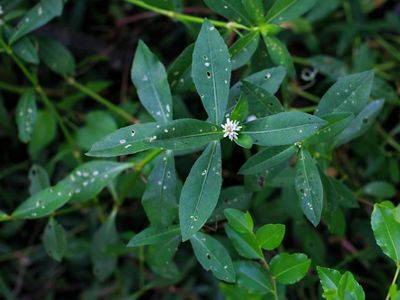
Alligator Weed (Alternanthera philoxeroides)
Native to South America and introduced into the United States in the 1890s in ship ballast water, this freshwater perennial invader forms dense mats in water bodies, wetlands and low-lying as well as upland areas. The thick mats in water replace native species and can result in fish kills and prevent recreational use as well as slow drainage that may cause flooding. Dense upland infestations make the land useless for any type of production. A South American flea beetle introduced in the 1980s in Florida for biological control of alligator weed has reduced the spread but is less effective in central and northern Alabama because of low over-winter survival. Several herbicides are available for effective treatment of alligator weed. Eradication requires multi-year applications.